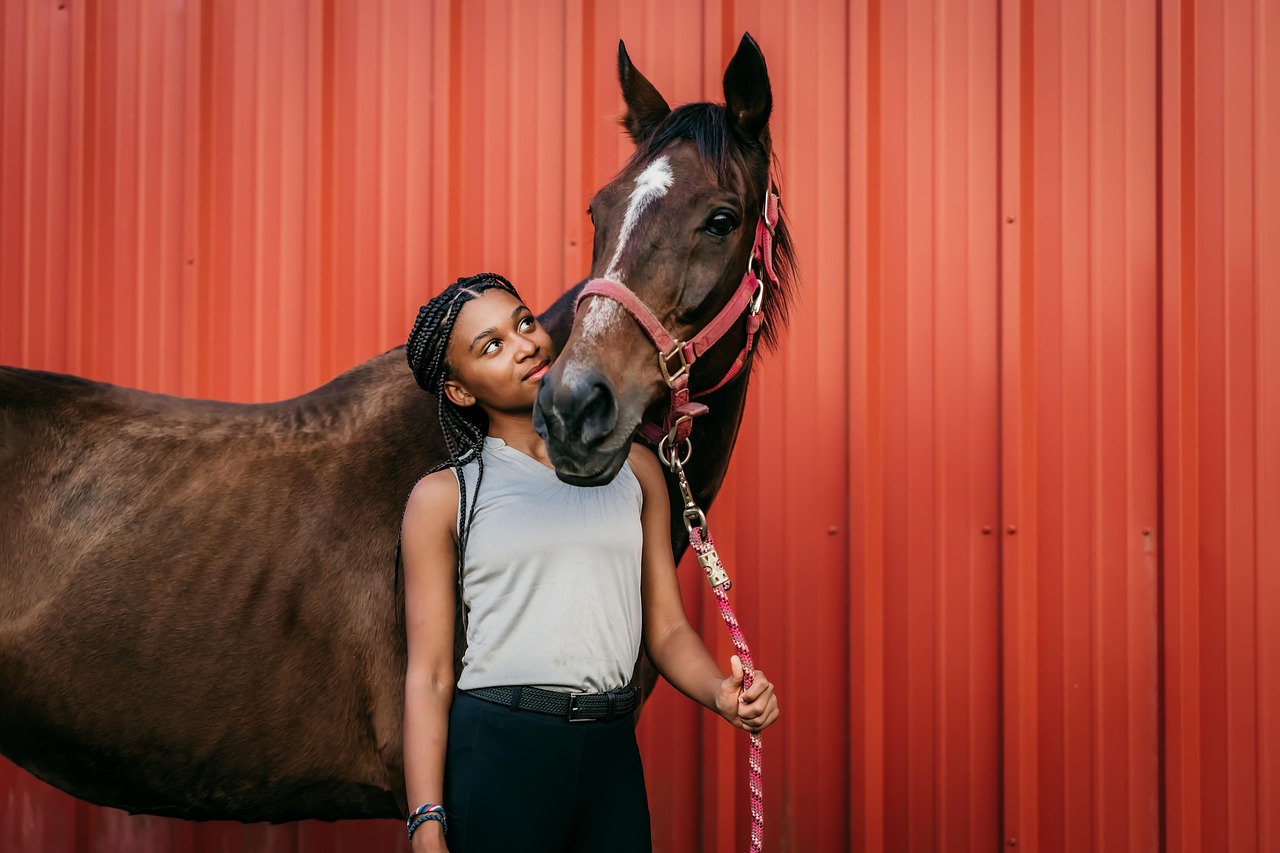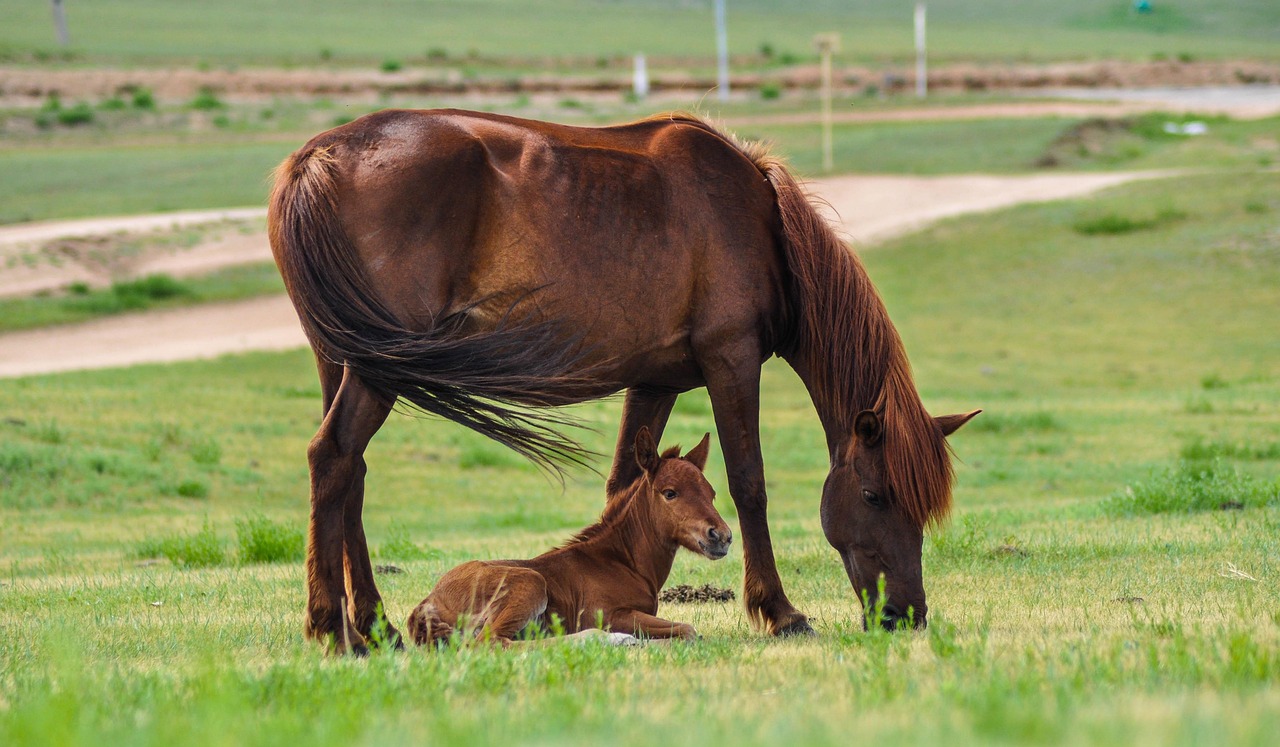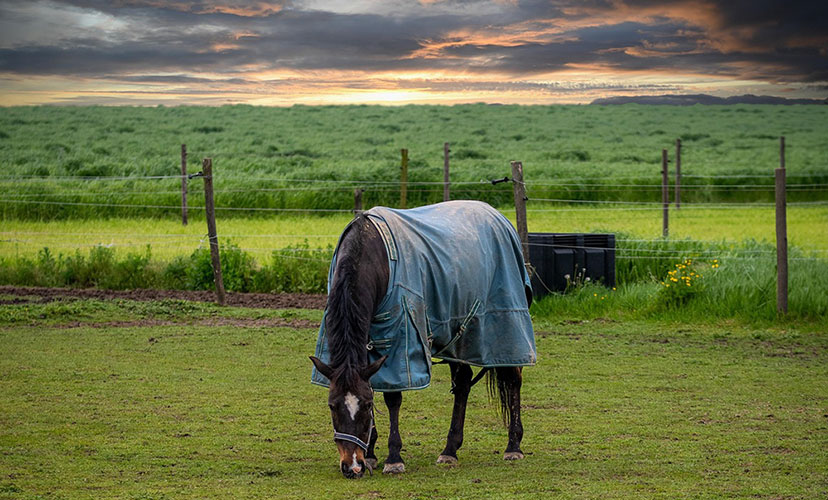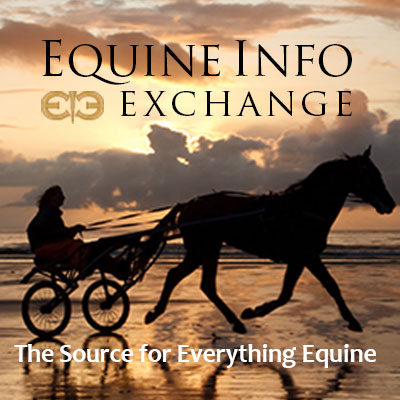Tack & Farm
Our Tack & Farm section features an Apparel section to find both practical and fashionable riding attire. If you ride English & Western or Race, many sources are available in the Tack section.
Building a barn? Need an architect for your equine dream home? Find one in Barns & Stalls.
Have a hungry horse? Of course you do! Find a place to buy your feed and tuck your horse in at night in the Bedding & Feed section. Looking for a place to keep your horse? You can find it in the Horse Boarding section. Keep your horse happy and beautiful with resources in our Grooming section.
Traveling? Find a Shipping company or Horse Sitting service if your horse is staying home!
Running and maintaining a farm or stable is a continuous effort, and to help find products or tools you need, please see our Equipment, Fencing and Management Tools sections.
Seeking Services? Find financial and tax expertise in our Accounting section. Companies who will help protect your investment are found in the Insurance section. For those who want legal advice about purchasing, liability, and other issues, please look at the Equine Law section to find an expert. Build and promote your business with teams from Marketing / Videography / Web Design.
Do we need to add more? Please use the useful feedback link and let us know!

Relocating a horse to another boarding barn is a decision often driven by a combination of issues related to your horse's health and happiness, the quality of care provided, and your own riding goals and satisfaction.
Signs related to your horse's well-being
Your horse's behavior can be a major indicator that it is unhappy or unsafe.
- Deteriorating physical condition: Look for unexplained weight loss or gain, a dull coat, or visible injuries that happen repeatedly. While accidents can happen, a pattern of injuries could signal unsafe fencing, pasture dynamics, or management.
- Negative changes in demeanor: Your horse may become more anxious, skittish, or aggressive than it used to be. A constant look of worry or a change in temperament suggests something is making it uneasy.
- Reduced turnout: Horses need regular turnout for their mental and physical health. If your horse is getting less turnout than promised, or if the pastures are overcrowded, this can cause stress.
- Unhealthy environment: Unclean stalls or water troughs indicate poor stable management. Look for excessive manure buildup, algae in water buckets, or strong ammonia smells.
Problems with barn management and care
Issues with the barn's management can directly impact your horse's welfare and your peace of mind.
- Poor communication: A barn manager who is uncommunicative, ignores your requests, or belittles your concerns is a major red flag. This can put your horse at risk if an issue arises and you cannot get in touch with the management.
- Inadequate feeding program: Be concerned if the feed room is a mess, the quality of hay seems poor, or if the barn feeds a different, lower-quality feed to boarders' horses than their own.
- Refusing outside professionals: A barn that does not allow you to use your own vet or farrier should be approached with extreme caution, as it limits your control over your horse's health care.
- Dishonesty or failing to deliver services: If you are not getting services that you are paying for, such as scheduled training rides or lessons, this is dishonest and a clear sign to leave.
Changes in your own needs
Sometimes the problem isn't the barn, but a mismatch between what you want and what the barn offers.
- Stalled riding progress: If your lessons have become stagnant and you feel unfulfilled or unchallenged, it may be time to seek a trainer who can help you reach your new riding goals.
- Need for different amenities: Your needs might evolve, and you may find yourself wanting an indoor arena, more extensive trail access, or other amenities that your current barn lacks.
- Toxic barn atmosphere: Constant barn drama or a negative social environment can make your time at the barn stressful rather than enjoyable. You deserve to be in a place where you feel welcome and happy.
- Escalating costs: Your current barn may be raising their rates and become unaffordable for you. You may need to explore more economical options provided by other facilities such as self-care or moving to a location less costly. What to do before deciding
- Communicate your concerns: Before making a final decision, have a calm, objective conversation with the barn manager. Clearly state your issues and give them a chance to improve the situation.
- Check other options: While working things out, tour other barns to see what is available and whether a move would be a better fit.
The bottom line is to trust your gut. If something doesn't feel right, or if you or your horse are consistently unhappy, it is likely time to part ways and find a better environment.
You can find more informative articles in our section on Tack & Farm. Take a look at our Curated Amazon Store for our selections in a wide variety of categories!
Are you interested in promoting your business or sharing content on EIE? Contact us at info@equineinfoexchange.com

Equestrians know a steady mind keeps the stride honest. We obsess over feed, feet, and fitness, yet curiosity and calm cement the whole picture. Daily enrichment doesn’t need gadgets or drama; it requires intention and rhythm. Even outside equestrian circles, an igaming solution aggregator shows how intelligent curation helps people find what matters—practical inspiration for owners, sorting advice, tools, and routines for real horses. EIE readers value practical, trustworthy ideas built for everyday barn life.
Why Enrichment Belongs In Every Program
Horses evolved to roam, graze, and hang out with buddies for hours, which stalls and tight schedules often compromise. When needs slip, boredom or stress can surface as weaving, cribbing, or box-walking. Thoughtful enrichment nudges time budgets toward natural behavior, easing anxiety and sharpening focus under saddle. That doesn’t replace good turnout or forage; it layers on calm, curiosity, and choice.
What The Research Says (In Plain Barn English)
Reviews link stereotypic behaviors to suboptimal management, with foraging-focused tweaks showing promise. Slow-feed hay bags lengthen eating time and can reduce unwanted patterns. Simple puzzle feeders, mirrors, or activity balls shift stall time away from standing and into purposeful engagement. None is are cure-all, but used consistently, they help horses settle and learn. That’s the win.
Easy Daily Tweaks You’ll Actually Keep Doing
Grand plans fade; small habits stick. Anchor enrichment to chores you already do—hay, mucking, grooming—so it happens even on busy days. Rotate items weekly to keep novelty without reinventing the wheel. Pair compatible turnout buddies for quiet social time. Keep notes so the barn team sees what works and what flops for each horse.
Five Quick Ideas To Try This Week
- Swap one hay feeding for a slow net to stretch foraging time without extra cost.
- Add a treat-dispensing ball for short, supervised sessions, then rotate it out.
- Create a sniff-and-explore corner with safe textures and scents; refresh monthly.
- Set pole patterns that ask for look, think, step—not just “go round.”
- Test a stall mirror for anxious types; track behavior for two weeks.
Training Upside: Calm Horses Learn Faster
A settled horse hears lighter aids, travels more softly, and copes better off-property. By meeting mental needs first, you lower overall arousal, so show-day noise or new venues feel less threatening. That steadiness benefits amateurs and pros alike, from first crossrails to complex lateral work. You’re teaching a brain, not just a body; enrichment keeps the lights on.
Match Tools To Temperament And Job
Not every horse loves the same puzzle or pace. Start with low-effort foraging games, then layer challenges that fit the horse’s mind and discipline. Trail-minded horses may enjoy variety underfoot, while ring horses might benefit from thoughtful pole grids. Give each experiment two weeks and record changes in behavior, appetite, and work ethic.
Using Simple Tech To Keep Everyone On The Same Page
You don’t need fancy systems to stay organized, but digital logs reduce misses. Stable apps and software track health notes, shoeing, vaccines, ride plans, and enrichment rotations, so nothing lives only in someone’s head. That clarity helps trainers, vets, and grooms pull in the same direction, quietly improving welfare and results.
Turn Data Into Kind, Consistent Routines
Give each horse a card—digital or paper—with a rotating plan: slow net on Monday, ball on Wednesday, poles on Friday. Snap quick photos or jot two-line notes after rides. Over time, you’ll spot patterns: which toy soothes pre-ride jitters, which days need extra hand-grazing: less guesswork, fewer flare-ups, more good work.
Curate Your Sources Like A Pro
EIE thrives by surfacing practical, credible equine content for a broad audience, and that mindset helps in the barn. Make a short list of trusted guides—veterinary-backed explainers on enrichment, welfare pages from national organizations, and hands-on DIY pieces. Review monthly, then trial one new idea with notes before scaling. Keep it real; keep it horse-first.
Choosing Products With Horse Sense
Flashy isn’t the point; safe and durable is. Favor gear that extends foraging, encourages gentle movement, or sparks controlled curiosity. Read product pages with a skeptical eye for claims and look for references to time budget changes or reduced stall vices. The best tools fit your space, your routine, and your horse’s personality.
A Quick Note On Organized Catalogs And Discovery
Well-structured directories outside our industry remind us why clean taxonomy matters. Clear categories and labeling help owners quickly find welfare-first ideas, rather than doom-scrolling. Even a directory of casino game developers demonstrates how indexing speeds discovery—a concept equine communities can borrow for training plans, enrichment libraries, and barn SOPs without losing the horse in the process.
Bottom Line: Curiosity Today, Confidence Tomorrow
Enrichment is not superfluous; it is part of good riding. Make minor, consistent adjustments to attendance and feed, matching them to temperament, and record your observations. Use simple tech for consistency, keep your sources tight, and celebrate tiny wins. A curious horse becomes a confident partner—and that confidence shows in every hoofbeat.
There are more interesting articles in our section on Tack & Farm.
Hit the Road with Husted – Be Ready Before You Roll
Whether you’re hauling horses to a show, a trail ride, or an emergency evacuation, transporting equines safely is a responsibility that demands preparation, knowledge, and confidence. That’s why Equine Guelph is once again offering its highly respected Horse Trailer Safety course on TheHorsePortal.ca, led by internationally recognized expert Dr. Rebecca Husted.
Dr. Husted brings decades of experience in Technical Large Animal Emergency Rescue, making her an invaluable guide through the complexities of equine transport. Her engaging teaching style and real-world insights prepare horse owners to anticipate problems before they arise—and respond effectively when they do.
Emergencies Don’t Wait. Will You Be Ready?
You’ve packed your gear, planned your route, and loaded your horses. But what happens if the unexpected strikes? Tire blowouts, brake failures, rollovers, or emergency unloading—these are real scenarios that demand quick thinking and solid preparation.
Participants dive into emergency preparedness, exploring:
- Must-have emergency equipment
- Roadside assistance strategies
- Handling mechanical failures and crashes
- Emergency loading and unloading
- Step-by-step actions for various emergency scenarios
Of course, prevention is always the first line of defence. In the video below, Dr. Husted explains caring for your trailer floor to reduce risk of injury to your horse.
A Deep Dive into Trailer Safety & Maintenance
Equine Guelph’s online horse trailer safety course goes far beyond emergencies to cover:
- Understanding your towing system—trailer specifications, truck compatibility, and legal regulations
- Trailer care and maintenance—inside and out
- Inspection protocols to catch issues before they become hazards
- Minimizing risks while driving
- Transporting your horse—balancing loads, weather considerations, insurance, and more
Engaging Online Learning
Hosted by The Horse Portal, this course offers a flexible online format with interactive discussion forums, where participants can engage directly with Dr. Husted and fellow horse owners. Whether you’re new to trailering or a seasoned hauler, this course will help you travel with confidence.
Course Dates: Oct 27 – Nov 7, 2025
Save your spot: https://thehorseportal.ca/course/horse-trailer-safety-fall-25/
This article originally appeared on Equine Guelph, The University of Guelph and is published here with permission.
You can find more informative articles in our section on Tack & Farm.
While you're here, find some perfect items for your horse! Visit our curated Amazon Store.

Fall can test even the best blanketing system. One day your horse is sweating under the sun, the next they’re standing in a cold drizzle.
Pick the wrong blanket and you’ll be dealing with rubs, damp spots, or a miserable horse. Pick the right one and your horse stays dry, comfortable, and ready to move.
The key is knowing which features actually matter. Here are the five features you should be looking for in your turnout blankets.
1. Waterproofing That Actually Holds Up
Most blankets advertise as “waterproof,” but seasoned horse owners know not every fabric holds up. After a week of steady rain, a weak blanket can start to seep, leaving your horse chilled and uncomfortable.
That’s why looking for turnout blankets with strong, coated fabrics matter, along with a breathable lining that prevents sweat from building up when the weather suddenly turns warm. The goal is to keep your horse dry on the outside and comfortable underneath.
If you’ve ever peeled off a damp, clammy blanket, you know how miserable that can make a horse feel. Paying attention to these details is part of smart seasonal horse care, ensuring your horse stays healthy through unpredictable fall weather.
2. An Outer Shell That Can Take a Beating
Horses aren’t gentle with their gear. A playful nip in the pasture or a good roll in rough dirt can shred a weak blanket in no time. That’s why denier rating matters.
Blankets made with 1200D or higher material can handle daily use without ripping at the first challenge. It’s one of those places where paying a little more upfront often saves you a lot of money and aggravation later.
3. Fit That Stays Put
Blankets that slip, twist, or rub are more than an annoyance. They can cause sores, limit movement, and leave gaps where wind or rain sneaks in. Adjustable straps at the chest, belly, and legs are non-negotiable.
The best designs allow you to fine-tune the fit so the blanket stays secure without restricting your horse. Features like shoulder gussets or contoured cuts also make a huge difference for horses with broader builds or big shoulders. If you’ve struggled with rubs or shifting, this guide to equine equipment fit has some useful insights.
4. Insulation That Matches Your Climate
A blanket that’s perfect in October might be too heavy or too light by late November. That’s where insulation weight comes in.
Lightweights (100–200g) are ideal for horses that run warm or for those milder fall days. Medium weights (200–300g) work better as the nights drop colder. If your climate swings wildly, look for systems with interchangeable liners. That way you’re not juggling three different blankets but can adjust warmth as needed. It’s a smarter investment, especially for owners managing multiple horses.
Of course, warmth isn’t just about blanketing. Maintaining muscle condition and fitness also helps horses handle seasonal swings more easily. Resources on conditioning horses in fall and winter explain how thoughtful exercise and care work hand in hand with blanketing to keep horses healthy through the colder months.
5. Smart Extras That Make Daily Care Easier
Sometimes it’s the small details that make you love or hate a blanket. A long tail flap shields against biting wind. Quick-clip closures make morning chores faster when your fingers are freezing. Reflective strips make night checks in the pasture less of a guessing game.
These aren’t “luxuries.” They’re the practical touches that improve both your horse’s comfort and your daily routine. When you’re blanketing every day for months, those little things add up.
Final Thoughts
Blanketing in fall isn’t about following a checklist. It’s about knowing your horse, your climate, and your management style. A strong, waterproof blanket with the right fit and insulation will always pay off in fewer worries, healthier horses, and less gear stress.
Choosing smarter now means fewer compromises later, and that’s something every horse and every owner can appreciate.
There are more interesting articles in our section on Health & Education.
- Five Careers in the Equine Industry
- Five Tips About Pigeon Fever
- Beating Summer Heat with Your Horse
- Five Tips for Preventing Heat Stress in Horses
- Five Tips for Protecting Your Horse From Flies and Mosquitoes
- Five Tips for Purchasing a Used Saddle
- Five Tips to Choose the Right Tractor for a Small Horse Property
- 7 Ways to Improve Your Horse's Performance with the Right Equipment
- Leather Saddlebag Shoulder Bags (51:45)
- Leather Texture Techniques (7:26) - Weaver Leather
































